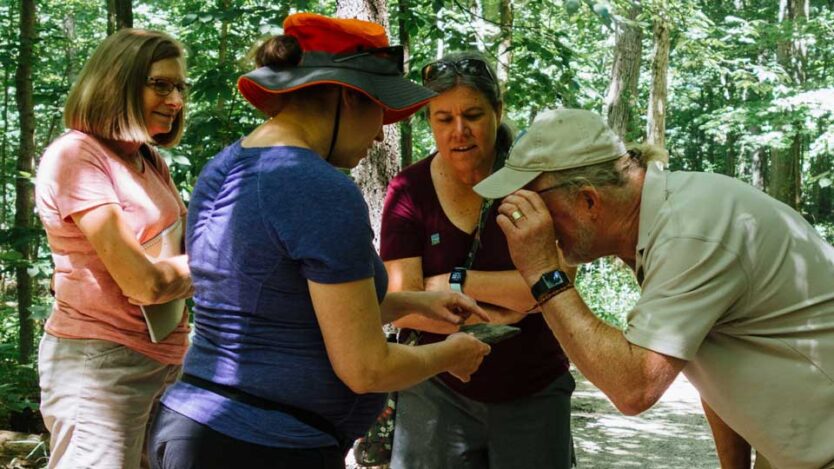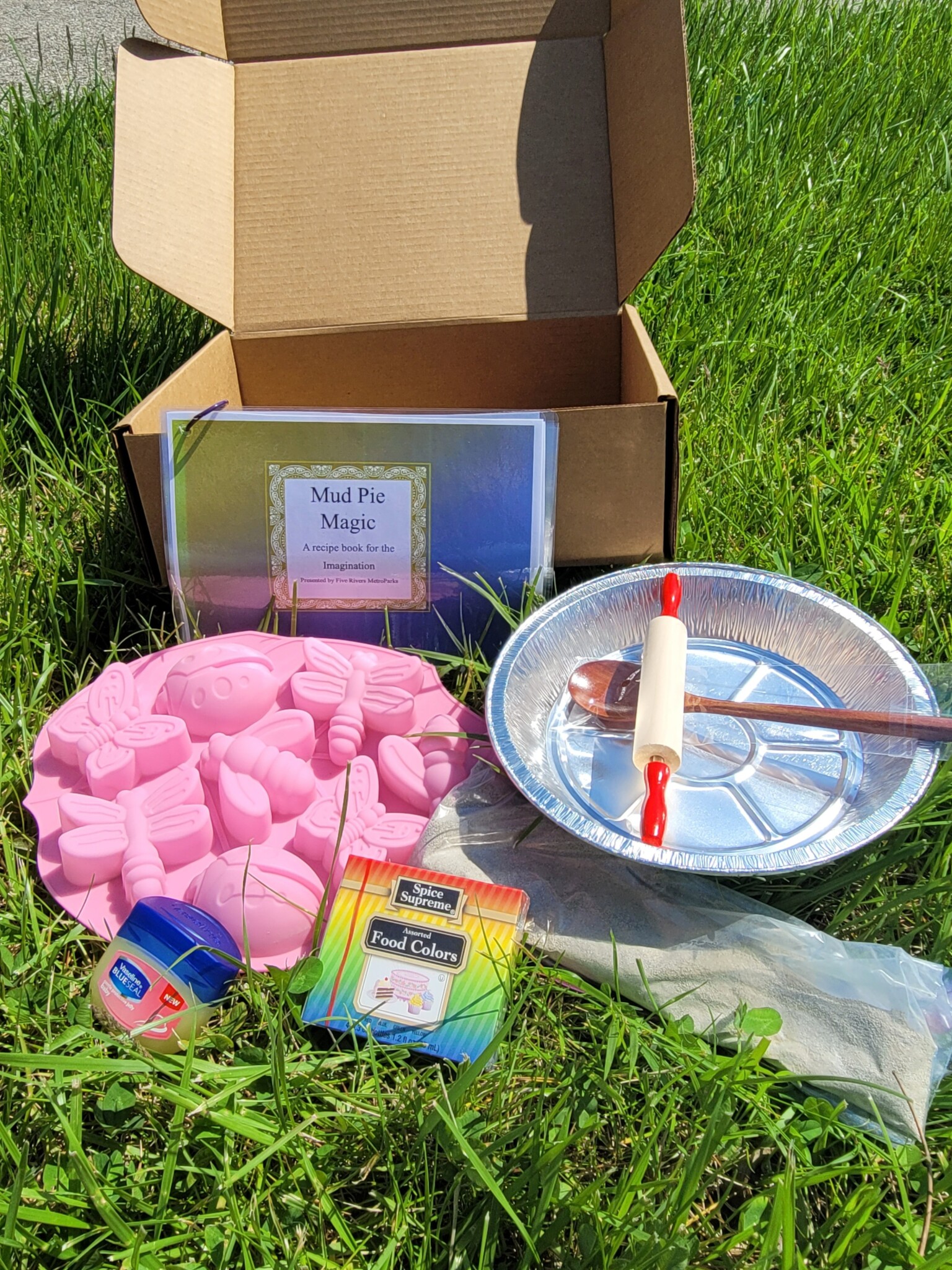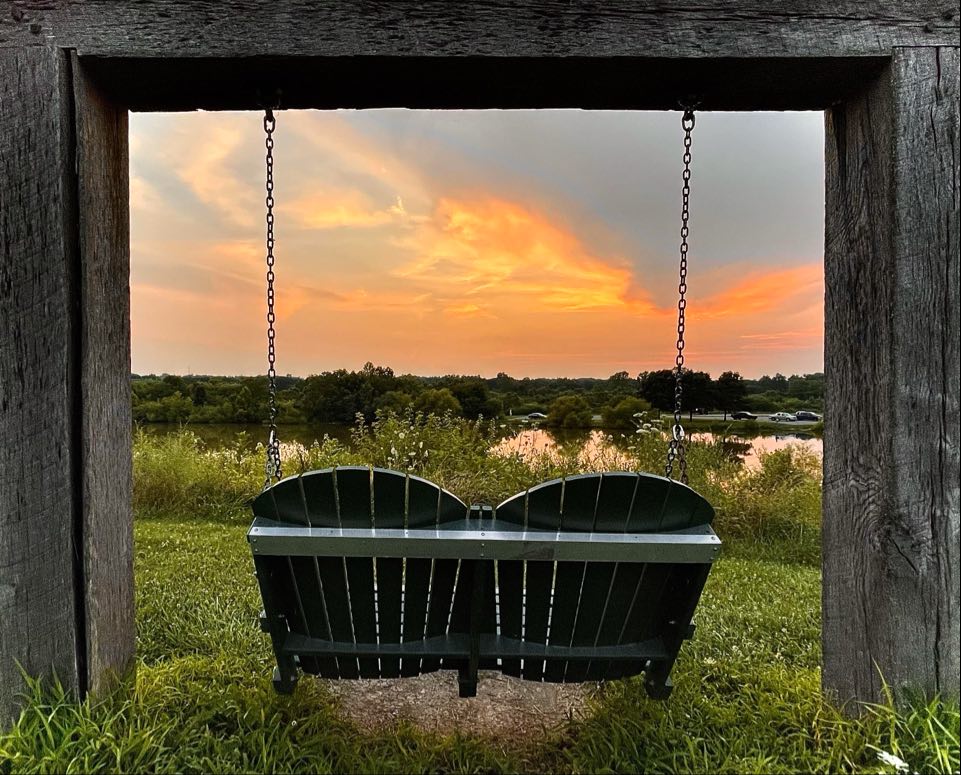Updated March 20th, 2023
Forest Therapy improves mental, physical health
Heads up! This article was last updated 1 year ago.
Join group walks or practice forest therapy on your own time.

While research shows spending just 20 minutes in nature — or simply going outside — improves your wellbeing, forest therapy takes it to the next level.
Ellen Foley and Dave Thaeler are forest therapy guides certified by the Association of Nature and Forest Therapy Guides and Programs (ANFT).
“It’s a really lovely practice, and it allows people to see another way of being in nature,” Foley said. “This practice of slowing down in the forest promotes a peaceful noticing of the surroundings and has the potential to relieve stress.”
The ANFT defines forest therapy as “a relational practice that brings people into deeper intimacy with natural places, … including our natural self. … There are many wonderful health benefits attributed to forest therapy, including boosted immune function, improved cardiovascular and respiratory health, attention restoration, and a reduction in stress and depression. But these effects are really the collateral impacts of a repaired relationship between people and places.”
Amos Clifford, ANFT founder and CEO, was inspired by the Japanese practice of forest bathing when he created the organization, which now has an international presence, in 2012. While there are differences between forest bathing in Japan and forest therapy, many of them are cultural. For example, the Japanese government created the practice of forest bathing, or Shinrin-yoku, in 1982 largely as a response to a public health crisis related to the effects of high levels of stress. Today, forest bathing is prescribed as a respected clinical therapy, due to the abundance of scientific research supporting its benefits and those of spending time in nature.
“There are strong connections between our physical and emotional well-being and our overall health,” Thaeler said. “If being in nature lowers your blood pressure and provides stress relief, you will also be more relaxed. There’s a certain sense of clarity, a certain sense of rest, when you’re in the forest. While it’s so different for every person, we believe the forest will be helpful in some way to everyone who goes on a (forest therapy) walk.”
They recommend starting here to experience the practice and comradery of a group forest therapy walk. For example, a group walk is different than a hike in the woods with friends, when you often are talking most of the time, catching up and sharing news. In addition, forest therapy guides will stop groups at specific locations and invite participants to engage in a sensory prompt, followed by the opportunity to share.
“We gather to share so people can feel comfortable, accepted and free to share their nature experiences without judgement,” Foley said. “People just listen, and sharing is always optional.”
Thaeler noted if people go to a park by themselves and there are lots of people around, they may feel a bit self-conscious about stopping on the trail and walking very slowly. Being in a group eases that feeling. “It’s nice to have a shared experience, even though the experience is always different,” he said. “You can make connections with others, and when you’re with a group the experience is sometimes deeper and richer.”
DIY Forest Therapy
For those who prefer to engage in their own practice of forest bathing, Foley and Thaeler offer the following tips:
- Use your senses: Forest therapy is about “being present and using your senses to notice what’s going on around you. Pay attention to leaves falling off a tree and follow one leaf all the way to the ground. Then follow another leaf,” Thaeler said. Added Foley: “Pick a sense, such as hearing or sight, and focus on one sense at a time. Maybe listen to birds and focus on that for a while. Practice just sitting with nature, with no goals. If you start thinking about your grocery list, focus on what’s around you to simply be present in nature. You’re using your senses and connecting with nature probably more deeply because you’re slowing down, and you’re focusing on one or more senses.”
- Slow down: Forest therapy also is different from a solo walk or hike, when you’re often exercising and goal-oriented. While practicing forest therapy, you’re moving slowly and “using your senses to experience the place around you,” Thaeler said. “You’re taking in where you’re sitting or standing in a very slow way, being very present to what’s happening around you and what’s happening inside you. You’re not just observing but participating with your senses.”
- Give yourself permission to stop: “In a very simple way, forest therapy almost gives people permission to stop, slow down and maybe even have a sense of play — just to stop and sit with themselves and the natural world around them,” Thaeler said.
- Be patient with yourself: Thaeler noted it’s possible to get frustrated when engaging in a forest therapy practice, and encouraged people to not give up. “You may think, ‘Here I am sitting outside, trying to observe nature and my mind is running. I’m not present, I’m at work or at home.’ That happens to all of us. Give yourself time because sometimes, for me, it’s during the last two or three minutes of sitting for 20 when my mind finally slows down enough to make a connection. Don’t get upset because your mind is moving.”
- Find your spot: Thaeler said, “Find a familiar place to go and spend just 15-20 minutes noticing changes in the landscape, weather, trees and seasons.”
- Start small: Especially for those who are new to spending time in nature, Foley suggests they “find the natural elements they’re most comfortable with, then build on it. It’s a practice. If you’re not comfortable walking on this trail, then sit on a bench.”
- Just go outside: “The more you can get outside, the better,” Thaeler said. “But it’s also about you and knowing yourself and your situation. If spending a half hour at a park is going cause even more stress, then maybe wait until you have time.” Added Foley: “If you have only five minutes, that’s better than nothing. If you can’t get outside, you can look out a window.”
Foley and Thaeler agree forest therapy is for everyone.
“You can definitely do it in your back yard,” Foley said. “You don’t even have to go to a park. You can sit on the porch and look at a tree or watch a squirrel. Everyone can do forest therapy regardless of mobility, sensory challenges or age. It is for everybody.”
Perhaps the most important tip is No. 7 above: Just do it.
“I’m surprised by how many different experiences people have when they go on a walk,” Thaeler said. “But generally speaking, people are surprised by how it feels to slow down and just be and not have to do anything and just be there with the forest. Some people comment they didn’t know how stressed they were.”
Foley said she’s seen many people have deeply moving experiences through the years, and she’s glad forest therapy made that possible.
“There are so many types of reactions,” she said. “Some people have cathartic experiences while others are just happy to be able to pause and be in nature in a different way.”
Five Rivers MetroParks Mindfulness Walks
MetroParks worked with community partners to develop four Mindfulness Walks, available as outings in MetroParks’ free mobile app. PDFs of the guides in English and Spanish also can be downloaded online. The walks are designed to help visitors slow down and use their senses to experience nature.
Suggested MetroParks Offerings
Forest Therapy Walk: Sunday, March 26, from 1 to 3 p.m. at Cox Arboretum MetroPark
Dave Thaeler will lead you on a walk through the early spring woods that will not only fill your senses but also give you wonderful relaxation that only nature can bring. Dress for the weather and walking and bring a mat to sit on. For those ages 18 and up. Space is limited; registration is required.
Healing Nature Program Kits: Friday, March 24, from 11 a.m. to 3 p.m. at the 2nd Street Market.
If you are looking for a new way to connect with nature and find peace of mind, try these healing nature kits. Five Rivers MetroParks Outdoor Connections staff will be selling a selection of healing nature program kits at the 2nd Street Market. $25 per program kit, first come first serve:
- Paint-a-park kit
- Nature Journaling kit
- Gratitude in Nature Journaling kit
- Bullet Journaling kit
These program kits are the perfect gift for the nature lover in you life or personal treat.
Suggested Reading
The Nature Fix by Florence Williams
Forest Bathing by Qing Li
Numerous titles by Amos Clifford
Sharing Nature with Children by Joseph Cornell
Suggest MetroParks Offerings





